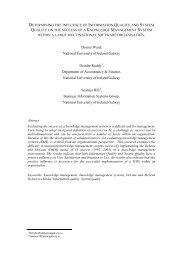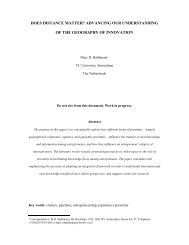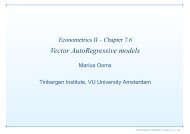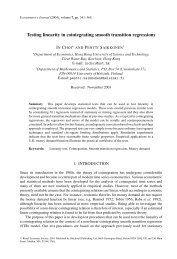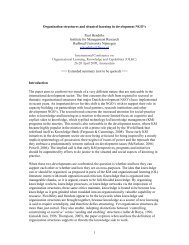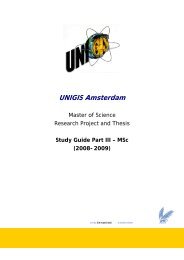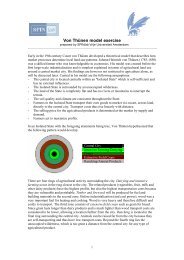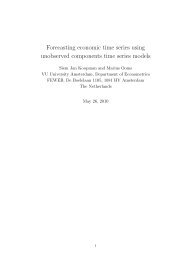Linear Time Series Models for Stationary data - Feweb
Linear Time Series Models for Stationary data - Feweb
Linear Time Series Models for Stationary data - Feweb
You also want an ePaper? Increase the reach of your titles
YUMPU automatically turns print PDFs into web optimized ePapers that Google loves.
AR(∞) representation<br />
A simple idea <strong>for</strong> linear <strong>for</strong>ecasting is to (auto)regress yt on its own<br />
lags, employing all the (partial) linear correlations of yt with its past.<br />
Infinite order Autoregressive representation:<br />
yt = E[yt|Yt−1] + εt<br />
E[yt|Yt−1] = α + π1yt−1 + π2yt−2 + . . . (7.2)<br />
E[(yt − µ)|Yt−1] = π1(yt−1 − µ) + π2(yt−2 − µ) + . . . + εt<br />
where α is a constant so that<br />
(1 − πk) −1 α = µ is the constant perfectly predictable<br />
deterministic part,<br />
π1(yt−1 − µ) + (π2 − µ)yt−2 + . . . is the (linearly) predictable<br />
stochastic part, and<br />
εt is the unpredictable innovation part or prediction error, satisfying<br />
the White Noise condition.<br />
Exercise (3): Using stationarity of yt, show E(yt) = µ = α<br />
1− πk .<br />
Chapter 7.1 Heij et al, TI Econometrics II 2006/2007 – p. 15/24





